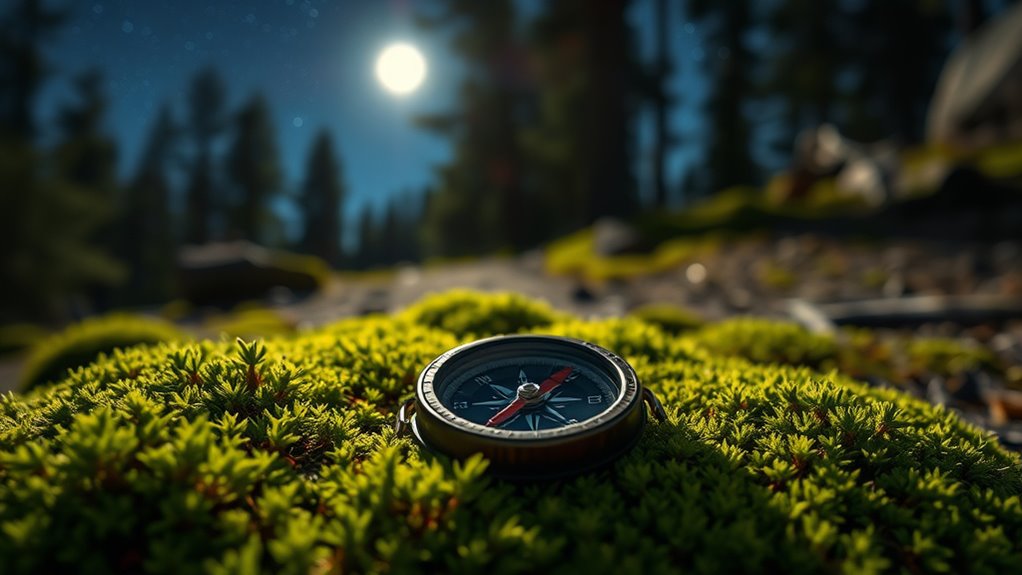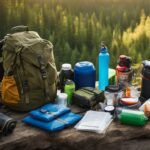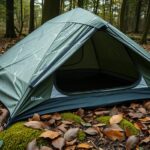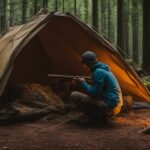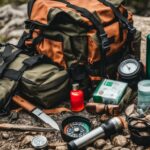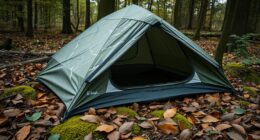Mastering low-tech navigation relies on simple yet effective natural indicators like observing moss on the northern side of trees, using shadows to estimate time and direction, and identifying the Polaris star to find north at night. By paying close attention to landscape cues and celestial patterns, you can confidently orient yourself without GPS or electronic devices. Keep exploring these skills, and you’ll uncover even more ways to navigate confidently with nature’s clues.
Key Takeaways
- Use moss growth on trees and rocks to determine north in the Northern Hemisphere.
- Identify Polaris or constellations like the Big Dipper and Cassiopeia for nighttime navigation.
- Observe and mark shadows to estimate the sun’s position and approximate cardinal directions.
- Recognize the sun’s daily path and shadow length changes to determine time and orientation.
- Combine landscape cues such as terrain flow and vegetation patterns for accurate environmental navigation.
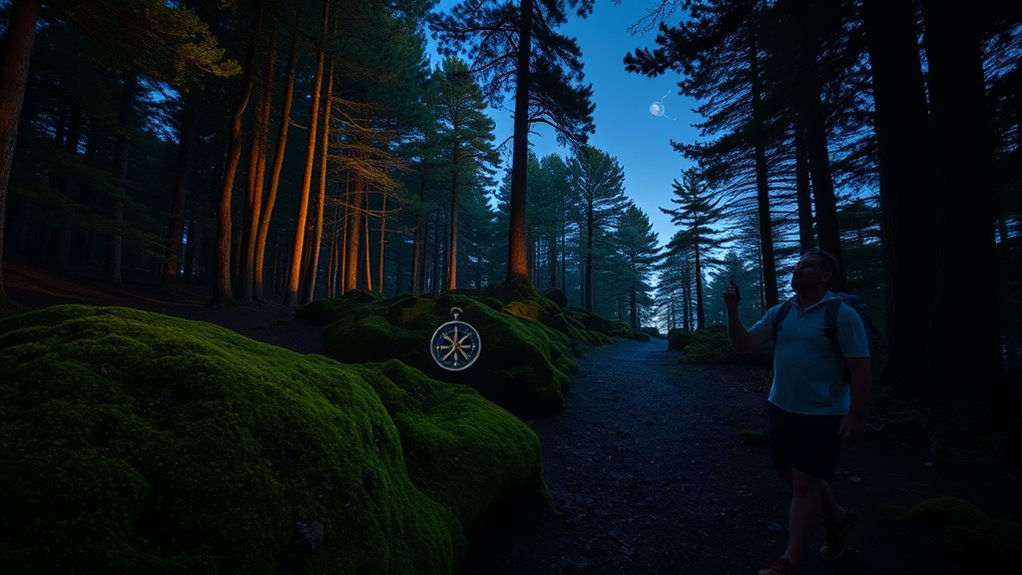
Have you ever wondered how travelers navigated before GPS and smartphones? Long before the digital age, explorers relied on a mix of natural indicators, traditional tools, and keen observation skills to find their way. Today, many see GPS alternatives as a nostalgic throwback, but understanding natural indicators can be a lifesaver when technology fails or isn’t available. Mastering these methods requires attention, patience, and a willingness to learn from the environment around you.
One of the oldest and most reliable natural indicators is the position of the sun and stars. During the day, the sun rises roughly in the east and sets in the west, providing a basic directional guide. By observing the sun’s path, you can determine east and west with a little practice. At night, the stars can become your navigational allies. The North Star, Polaris, sits nearly directly above the North Pole, making it a perfect beacon for finding north in the Northern Hemisphere. If you can locate the Big Dipper or Cassiopeia, you can pinpoint Polaris and orient yourself accordingly. This celestial navigation isn’t just romantic; it’s practical, especially when modern devices die or lose signal.
Use the sun by day and Polaris by night to find your way when technology fails.
Shadows are another useful natural indicator. The length and direction of shadows cast by the sun change throughout the day. By marking the tip of a shadow with a stick or a rock, you can track how it moves to determine the sun’s position and approximate cardinal directions. In the morning, shadows point westward; in the afternoon, they point eastward. Over time, you’ll learn to interpret these subtle cues to maintain your bearings. Shadows can also help you estimate the time of day, giving you a better sense of your surroundings without needing a watch.
Aside from celestial cues and shadows, natural indicators like the landscape itself can guide you. Certain plants, moss, and lichen often grow more abundantly on the northern side of trees and rocks in the Northern Hemisphere because they thrive in shadier, cooler conditions. This moss can act as a subtle compass, especially in wooded areas. Additionally, wind patterns, the shape of the terrain, and the flow of water can provide clues to your location. For example, streams often flow downhill, and knowing the general topography can help you find your way. Interestingly, understanding natural indicators can also be supported by knowledge of how contrast ratios and color accuracy in visuals help us interpret our environment more effectively, akin to how skilled navigation depends on subtle visual cues.
While digital tools have made navigation easier, developing skills in traditional, low-tech methods keeps you connected to your environment. Relying on natural indicators and understanding your surroundings can be empowering, especially in remote areas. These methods may require patience and practice, but they turn you into a more self-reliant traveler—able to navigate confidently even when technology isn’t an option.
Frequently Asked Questions
How Accurate Are Traditional Navigation Methods Compared to GPS?
Traditional navigation methods, like using the stars, moss, and shadows, can be surprisingly accurate when conditions are clear and you have good skills. However, they’re less reliable than GPS, which depends on satellite technology and digital mapping. GPS provides precise, real-time positioning, but it can fail in remote areas or due to signal issues. So, while traditional methods are useful backups, GPS remains the most accurate in most situations.
Can Moss Truly Indicate Direction Reliably in All Environments?
Think of moss growth as a quiet compass, yet it’s like a whisper in the wind—it’s not always trustworthy. Environmental factors like moisture, shade, and terrain influence moss’s growth, making it unreliable in varied environments. So, while moss can hint at direction, it’s not a foolproof method. Relying solely on it could lead you astray, especially when conditions aren’t consistent. Use it as a guide, but not your only one.
What Are the Best Star Patterns for Nighttime Navigation?
When engaging in celestial navigation, recognizing specific star patterns helps you find your way at night. Focus on prominent constellations like Ursa Major, which contains the Big Dipper, and Orion, with its distinctive belt. These patterns serve as reliable guides for star pattern recognition, allowing you to determine direction. By memorizing these key formations, you can confidently navigate even in unfamiliar terrain under clear night skies.
How Do Shadows Help Determine Time and Direction?
Shadows help you determine time and direction through shadow casting, which varies with solar elevation. As the sun moves, shadows lengthen or shorten, indicating the time of day. By observing the shadow’s angle and length, you can also identify cardinal directions—long shadows point east in the morning and west in the evening. This simple method relies on understanding solar elevation and how shadows change throughout the day.
Are Low-Tech Navigation Skills Still Taught in Modern Survival Courses?
You might think modern survival courses ditch low-tech skills, but they don’t! In fact, they prioritize map reading and compass skills because they’re lifesavers when technology fails. These skills are essential, like a secret weapon against chaos. Even in a digital world, learning to navigate with shadows or moss keeps you prepared. So yes, low-tech navigation is still taught, ensuring you’re never lost, no matter what happens.
Conclusion
So, don’t underestimate the power of simple techniques like reading moss, stars, or shadows. In a world obsessed with gadgets, mastering these low-tech skills keeps you grounded and prepared for anything. Remember, sometimes the best way forward is to go back to basics—you never know when you’ll need to rely on nature’s clues. Keep practicing, and you’ll find that old tricks can prove just as reliable as high-tech tools. After all, it’s better to be safe than sorry.

